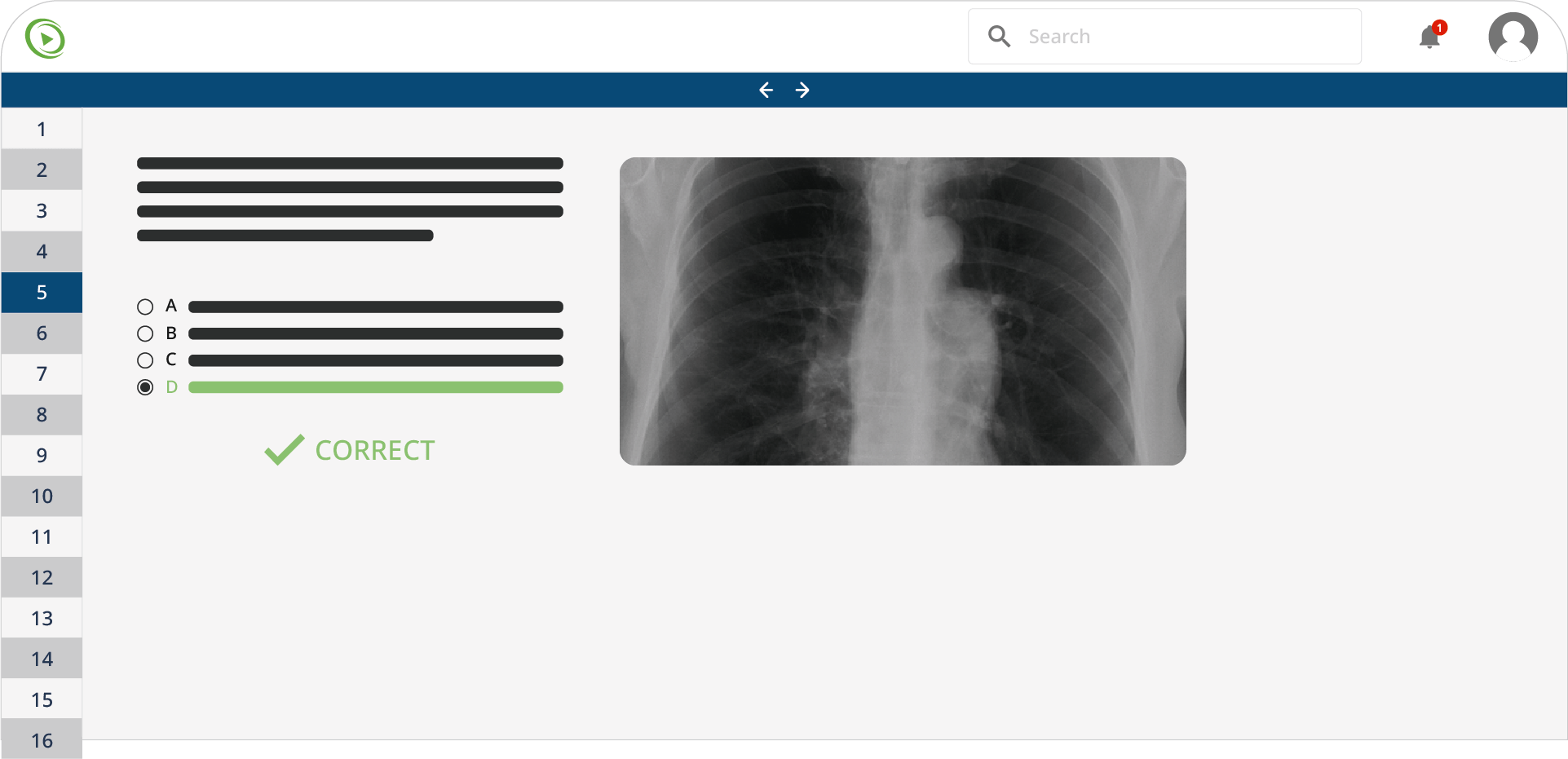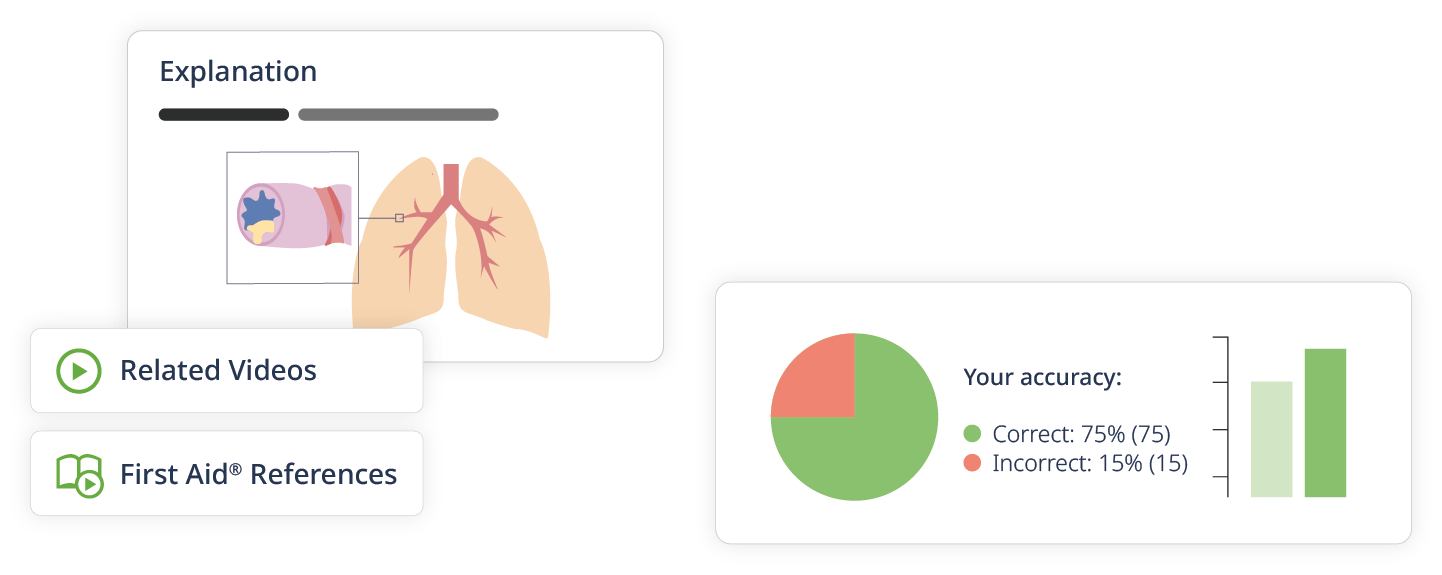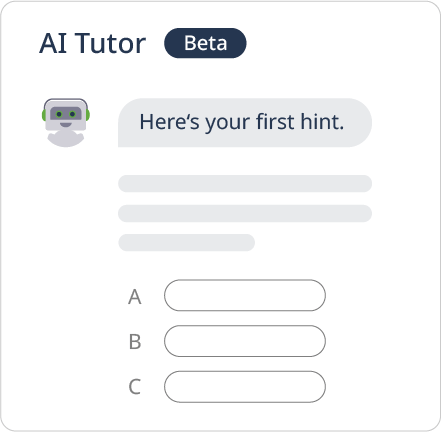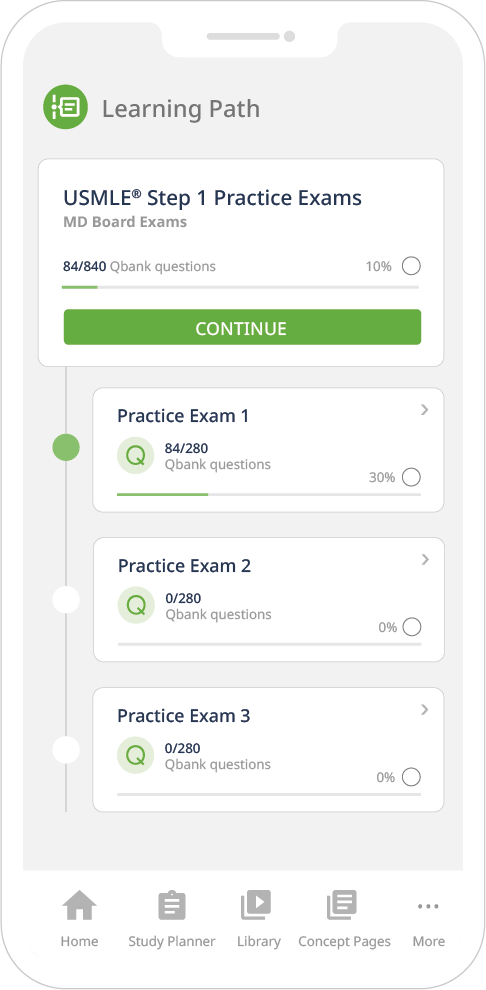Pass the USMLE® Step 1 with Confidence
Boost your USMLE Step 1 preparation with an AI-augmented Qbank and a customized, all-in-one online course platform
Video Lessons
Practice Your Way to USMLE Step 1 Success
Master medical concepts with an AI-augmented Qbank and preconfigured study schedules
- 2,200+ USMLE Step 1 questions
- In-depth video and text rationales
- AI Tutor assistance
- High-quality illustrations
- First Aid® references
- Performance tracking with adaptive review
Integrate Lecturio’s features into your study routine for the most efficient USMLE Step 1 preparation. You’ll study smarter, master concepts faster, and feel fully prepared for test day.


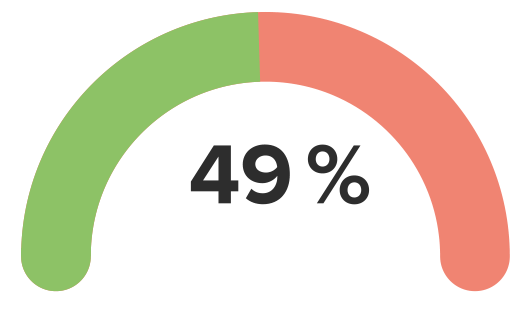
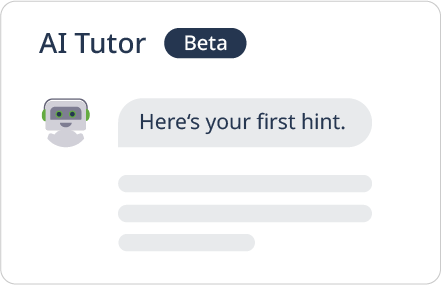






- 40-Day USMLE Step 1 Schedule
- 60-Day USMLE Step 1 Schedule
- 21-Day Intensive USMLE Qbank Training
- USMLE Step 1 Practice Exams
- USMLE Step 1 Self-Assessment
Skip the guess work and streamline your Step 1 prep with Lecturio’s tailored Learning Paths. Designed by top USMLE coaches, these study schedules and practice exams strategically guide you on what, when, and how to study. Choose your plan now and pave your way to exam success!
Ace the USMLE with Expert Guidance and Proven Strategies
Boost your exam performance and confidence with Lecturio's Qbank walkthrough USMLE Step 1 tutorials

Optimize Your USMLE Step 1 Preparation
Learn and understand key medical topics with high-yield Video Lessons and detailed Concept Pages
- 3,900+ comprehensive video lessons
- Integrated recall questions
- High-quality and downloadable slides
- Detailed illustrations and 3D models
- Summaries to support your learning
Lecturio’s expert instructors break down complex USMLE Step 1 topics to ensure you grasp each subject thoroughly.


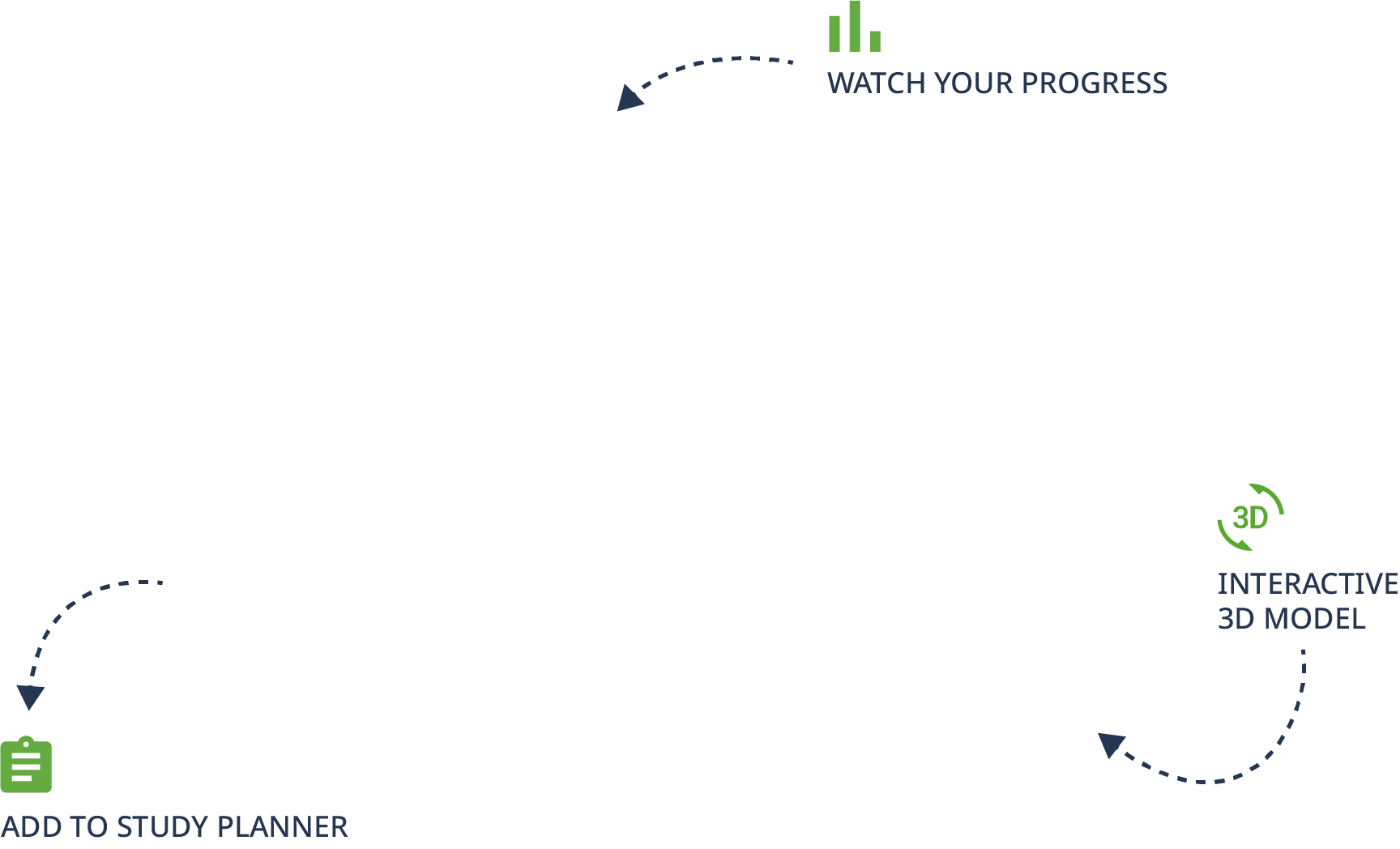

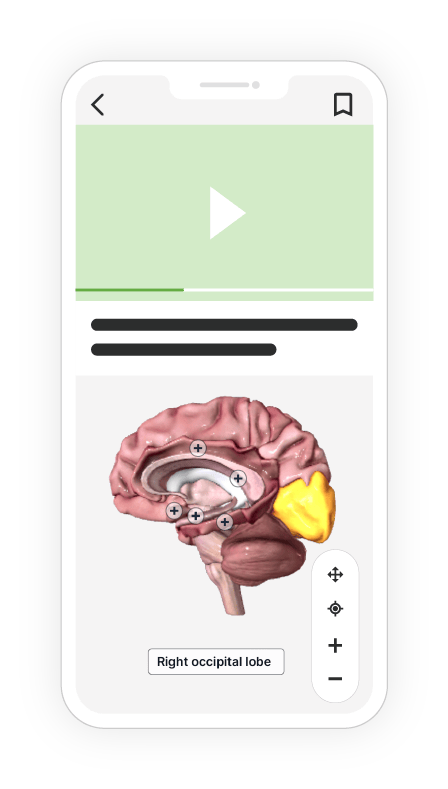




- 1,450+ in-depth Concept Pages
- Linked video lessons and Qbank tests
- High-yield and up-to-date
- Detailed images, charts, and tables
Built and peer-reviewed by US-trained physicians, our detailed Concept Pages teach you new medical concepts from the ground up and strengthen your grasp on challenging topics.
Lean on our experience
Top educators lead you to excellence








Lecturio works
Lecturio’s award-winning educators, learning experts, and physicians work together to integrate evidence-based learning tools and strategies into your USMLE Step 1 preparation
20 point increase
In NBME CBSSA scores using supplemental study routines from Lecturio
37% increase in correct answers
When answering first attempt Qbank questions

37% increase
in correct answers
When answering first attempt Qbank questions
Increased their exam confidence
in their preparation for USMLE Step 1
Preferred the increased flexibility and convenience Lecturio offers
in exam preparation after using Lecturio
Would recommend Lecturio to a friend
An overwhelming number of students find Lecturio to be a smart and reliable resource







Double Flash Sale
Save
50%
on all plans now
Medical Basic
Full library access
Videos + Concept Pages
without Qbank and smart exam prep features
Best exam & board prep
Medical Premium
Full library access
Videos + Concept Pages
Powerful Qbank
with AI-tutor + performance tracking
Structured study plans
Expert-built exam & board prep
NEJM Healer Patient Simulations
Develop your clinical reasoning
AI Assistant
Get answers you can trust
Personal Tutoring
starts at
per month
A personal study tutor helps you achieve your goals in regular 1-on-1 tutoring sessions.
Medical Basic
Pay after 7 days, cancel anytime
Full library access
Videos + Concept Pages
without Qbank and smart exam prep features
Best exam & board prep
Medical Premium
Pay after 7 days, cancel anytime
Full library access
Videos + Concept Pages
Powerful Qbank
with AI-tutor + performance tracking
Structured study plans
Expert-built exam & board prep
NEJM Healer Patient Simulations
Develop your clinical reasoning
AI Assistant
Get answers you can trust
Personal Tutoring
starts at
per month
A personal study tutor helps you achieve your goals in regular 1-on-1 tutoring sessions.
Medical Basic
Full library access
Videos + Concept Pages
without Qbank and smart exam prep features
Best exam & board prep
Medical Premium
Full library access
Videos + Concept Pages
Powerful Qbank
with AI-tutor + performance tracking
Structured study plans
Expert-built exam & board prep
NEJM Healer Patient Simulations
Develop your clinical reasoning
AI Assistant
Get answers you can trust
Personal Tutoring
starts at
per month
A personal study tutor helps you achieve your goals in regular 1-on-1 tutoring sessions.
Medical Basic
Pay after 7 days, cancel anytime
Full library access
Videos + Concept Pages
without Qbank and smart exam prep features
Best exam & board prep
Medical Premium
Pay after 7 days, cancel anytime
Full library access
Videos + Concept Pages
Powerful Qbank
with AI-tutor + performance tracking
Structured study plans
Expert-built exam & board prep
NEJM Healer Patient Simulations
Develop your clinical reasoning
AI Assistant
Get answers you can trust
Personal Tutoring
starts at
per month
A personal study tutor helps you achieve your goals in regular 1-on-1 tutoring sessions.
Medical Basic
Full library access
Videos + Concept Pages
without Qbank and smart exam prep features
Best exam & board prep
Medical Premium
Full library access
Videos + Concept Pages
Powerful Qbank
with AI-tutor + performance tracking
Structured study plans
Expert-built exam & board prep
NEJM Healer Patient Simulations
Develop your clinical reasoning
AI Assistant
Get answers you can trust
Personal Tutoring
starts at
per month
A personal study tutor helps you achieve your goals in regular 1-on-1 tutoring sessions.
Medical Basic
Pay after 7 days, cancel anytime
Full library access
Videos + Concept Pages
without Qbank and smart exam prep features
Best exam & board prep
Medical Premium
Pay after 7 days, cancel anytime
Full library access
Videos + Concept Pages
Powerful Qbank
with AI-tutor + performance tracking
Structured study plans
Expert-built exam & board prep
NEJM Healer Patient Simulations
Develop your clinical reasoning
AI Assistant
Get answers you can trust
Personal Tutoring
starts at
per month
A personal study tutor helps you achieve your goals in regular 1-on-1 tutoring sessions.
Intensify Your Learning Journey
Explore tailor-made curricula for current and future clinicians
Frequently Asked Questions about
the USMLE Step 1 Exam
The USMLE Step 1 is the first in a series of standardized exams required to earn medical licensure in the United States. Step 1 assesses your understanding of important concepts of basic medical sciences. This computer-based test focuses on the principles and mechanisms of health, disease, and modes of therapy. Find answers to more Step 1 FAQs here →
To be eligible to take USMLE Step 1, you must be a current MD student or graduate of a LCME-accredited medical school in the US or Canada, OR a current DO student or graduate of an AOA-accredited medical school in the US, OR a medical student or graduate of a medical school outside the US listed in the World Directory of Medical Schools who meets the ECFMG’s eligibility criteria.
Step 1 is administered year-round, but you must register in advance. Many students take Step 1 at the end of their second year of medical school (around April). It is administered at Prometric testing centers around the world. For international medical graduates, we recommend doing the test at the end of your pre-clinical education.
As of January 26, 2022, the USMLE Step 1 exam is now scored as pass/fail. This decision was made by the Federation of State Medical Boards (FSMB) and the National Board of Medical Examiners® (NBME®), co-sponsors of the USMLE.
The intent of this change is to reduce overemphasis on USMLE performance while continuing to provide a valid and reliable measure of understanding important fundamental science concepts for medical licensure.
Please note that the pass/fail scoring does not apply to USMLE Step 2 CK or Step 3. Those exams will continue to be numerically scored.
Learn more about the USMLE changes and the old way of USMLE scoring on Lecturio’s blog.
Step 1 is a computer-based multiple choice exam with up to 280 questions total. This exam is administered in seven 60-minute testing blocks with a maximum of 40 questions per block, with a total of 45 minutes of break time (reserved for authorized breaks and computer transitions between blocks). Questions are posed in multiple choice format, based on patient-centered vignettes, with a single best answer. Multiple answer options may be partially correct, but there is only one best answer. If you are unsure about an answer, it is better to make an educated guess as unanswered questions are automatically counted as incorrect answers.
Step 1 is designed to measure your knowledge of basic science. This includes General Principles, Blood & Lymphoreticular/Immune System, Behavioral Health & Nervous Systems/Special Senses, Musculoskeletal, Skin & Subcutaneous Tissue, Cardiovascular System, Respiratory & Renal/Urinary Systems, Gastrointestinal System, Reproductive & Endocrine Systems, Multisystem Processes & Disorders, Biostatistics & Epidemiology / Population Health, and Communication and Interpersonal Skills.
The exam is also organized by physician task and competency, such as medical knowledge, patient care (diagnosis), patient care (management), communication/professionalism, and practice-based learning and improvement. Further information on the content of the USMLE Step 1 exam can be found here.
Studying for the USMLE Step 1 exam can seem like a daunting task due to the breadth of content covered. What can help is understanding that it is not “just” about remembering content: Taking an organized approach and having your strategy in place early on can help tremendously. Here are some pieces of advice to keep in mind:
- Familiarize yourself with the format of the exam. It’s composed of multiple-choice questions based on patient-centered vignettes. You’ll have 7 blocks of 60 minutes each with a maximum of 40 questions per block.
- Follow a study schedule: Start studying well in advance of your test date, typically at least 6 months before. Break down your study schedule by topics and prioritize your weak areas.
- Use high-yield resources: Use resources designed specifically for USMLE Step 1 preparation. Comprehensive resources like Lecturio provide a complete package with Qbank, high-yield video lectures, Concept Pages, and Learning Paths.
- Practice with questions: One of the best ways to prepare for the Step 1 is to practice with as many questions as possible. Utilize the Qbank feature of your study resource. This will not only enhance your knowledge and make you apply concepts instead of just remembering them, but also help you become familiar with the exam’s format.
- Take breaks: Avoid burnout by taking short breaks during study sessions and longer breaks (like a full day off) every week.
- Simulate the exam conditions: Do a few full-length practice tests in conditions as close to the actual exam as possible. This can help you build stamina and get a feel for the timing of the actual test. A great opportunity are Lecturio’s self assessments.
- Stay positive: A positive mindset is very important for success. Confidence can come from thorough preparation and the belief that you can achieve your goal, as well as taking good care of your physical and mental health even during the stressful study period.
Remember, everyone studies differently, so it’s important to find a routine that works best for you. Regular self-assessment is key to understanding where your strengths and weaknesses lie, and adjusting your study plan accordingly.
Read more on how to study for the USMLE Step 1 on Lecturio’s student blog →
Lecturio offers several unique features that make it an attractive choice for medical students in the US preparing for their USMLE Step 1:
- Comprehensive resource: Lecturio provides a complete package of resources, including a Qbank, high-yield video lectures, Concept Pages, and Learning Paths, all designed specifically for USMLE Step 1 preparation.
- Powerful Qbank: Lecturio’s Qbank contains over 2,200 USMLE board-style questions with detailed explanations, high-quality illustrations, and First Aid references, allowing students to test their knowledge and improve their understanding of essential concepts.
- Expert-crafted Learning Paths: Lecturio’s Learning Paths are curated by top USMLE coaches and offer customizable schedules, clear instructions, and practice exams, making it easier for students to strategically plan their exam preparation.
- High-quality video lectures: Lecturio’s video lectures are created by expert educators, who deliver comprehensive and easy-to-understand content that simplifies complex USMLE Step 1 topics, ensuring thorough understanding.
- Comprehensive Concept Pages: The platform offers 1,450+ in-depth Concept Pages that are high-yield, up-to-date, and comprehensive with detailed images, charts, and tables, helping students master new medical concepts and reinforce their knowledge of challenging topics.
- Customizable schedules: Lecturio’s platform allows students to tailor their study schedules according to their unique needs and goals, ensuring efficient exam preparation.
- Flexibility: Lecturio is accessible on multiple devices, including computers and smartphones, allowing students to study anytime, anywhere.
- Subscription options: Lecturio offers various subscription plans to accommodate different budgets and study durations, with full access to all resources and a 10-day money-back guarantee on the 12-month and 24-month plans.
These features make Lecturio a comprehensive and convenient resource for medical students in the US preparing for their USMLE Step 1.
